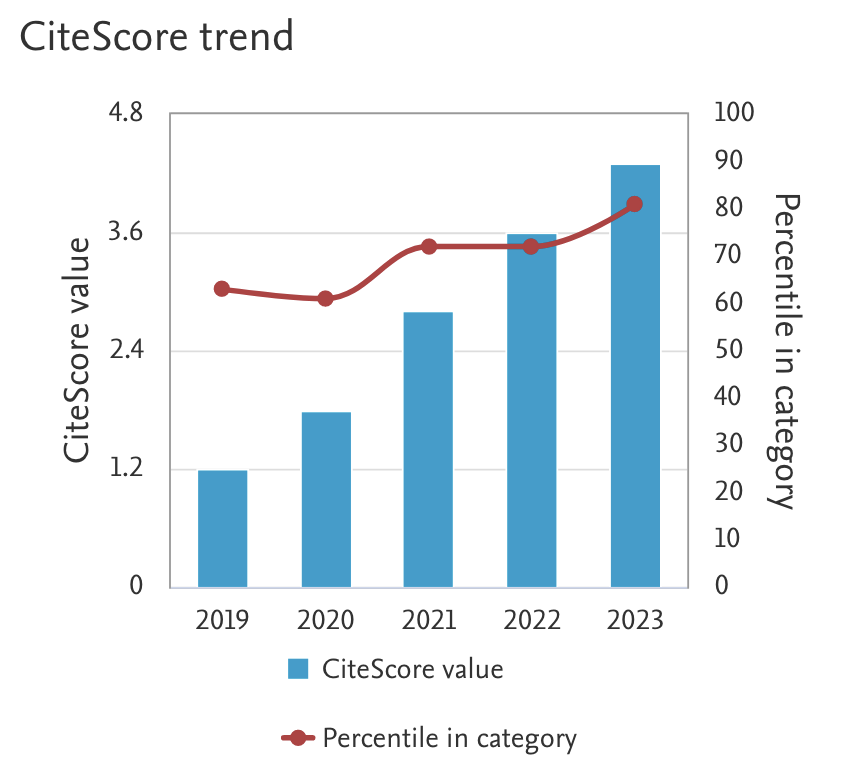Early venous congestion after diep flap breast reconstruction: case report of a successful management
Keywords:
DIEP flap complication, Venous Congestion, Flap resuscitationAbstract
Background and aim: More than 250 000 women estimated to be diagnosed with breast cancer in the USA every year. Mastectomy is primary treatment for more than a third of those with early-stage disease. Most of the patients undergoing mastectomy receive breast reconstruction. A number of. Surgical techniques have been described to reconstruct the breast. With autologous tissue breast reconstruction, the plastic surgeon uses patient’s own tissues, taken from a different part of the body where there is an excess of fat and skin. Deep inferior epigastric perforator (DIEP) flap is the autologous breast reconstruction technique of choice in our department due to long lasting results, low donor site morbidity and positive patient reported outcomes have been described.
Case Report: We present the case of a 42-year-old woman who underwent neoadjuvant chemotherapy followed by left breast simple mastectomy, axillary lymph-nodes dissection and later adjuvant radiation therapy (RT). After conclusion of RT a DIEP flap breast reconstruction was performed. Nine-hours after the operation, signs of acute venous congestion were noted. The venous congestion was treated by a combined surgical and medical approach based on pedicle discharge and ICU resuscitation protocol. After take back surgery, the patient was tightly monitored in the intensive care unit where intravenous heparin infusion and leech therapy were performed for 2 days. Flap congestion resolved completely, and the patient was discharged.
Conclusions:
Venous congestion is very difficult to treat due to its potential multifactorial nature. The most important step is to recognize this kind of emergency because irreversible microvascular damages will develop in 6–8 hours. Because of multiple causes of venous congestion a timely multidisciplinary approach is mandatory, to maximize flap salvage and success rates.
References
Petit JY, Rietjens M, Lohsiriwat V, et al. Update on breast reconstruction techniques and indications. World J Surg. 2012;36(7):1486-1497. doi:10.1007/s00268-012-1486-3
Pirro O, Mestak O, Vindigni V, et al. Comparison of Patient-reported Outcomes after Implant Versus Autologous Tissue Breast Reconstruction Using the BREAST-Q. Plast Reconstr Surg Glob Open. 2017;5(1):e1217. doi:10.1097/GOX.0000000000001217
Damen THC, Mureau M a. M, Timman R, Rakhorst HA, Hofer SOP. The pleasing end result after DIEP flap breast reconstruction: a review of additional operations. J Plast Reconstr Aesthet Surg. 2009;62(1):71-76. doi:10.1016/j.bjps.2007.09.045
Toyserkani NM, Jørgensen MG, Tabatabaeifar S, Damsgaard T, Sørensen JA. Autologous versus implant-based breast reconstruction: A systematic review and meta-analysis of Breast-Q patient-reported outcomes. Journal of Plastic, Reconstructive & Aesthetic Surgery. 2020;73(2):278-285. doi:10.1016/j.bjps.2019.09.040
Ho OA, Lin YL, Pappalardo M, Cheng MH. Nipple-sparing mastectomy and breast reconstruction with a deep inferior epigastric perforator flap using thoracodorsal recipient vessels and a low lateral incision. J Surg Oncol. 2018 Sep;118(4):621-629.
Cheng MH, Tee R, Chen C, Lin CY, Pappalardo M. Simultaneous Ipsilateral Vascularized Lymph Node Transplantation and Contralateral Lymphovenous Anastomosis in Bilateral Extremity Lymphedema with Different Severities. Ann Surg Oncol. 2020 Dec;27(13):5267-5276. doi: 10.1245/s10434-020-08720-2. Epub 2020 Jun 18.
Pappalardo M, Chang DW, Masia J, Koshima I, Cheng MH. Summary of supermicrosurgery hands‐on course and live surgeries at 8th world symposium for lymphedema surgery. J Surg Oncol. 2020 Jan;121(1):8-19. doi: 10.1002/jso.25619. Epub 2019 Jul 16.
Santanelli F, Longo B, Cagli B, Pugliese P, Sorotos M, Paolini G. Predictive and protective factors for partial necrosis in DIEP flap breast reconstruction: does nulliparity bias flap viability? Ann Plast Surg. 2015;74(1):47-51. doi:10.1097/SAP.0b013e31828d994d
Starnoni M, Pinelli M, Franceschini G, De Santis G. A Rare Case of Nipple-Areolar Complex Partial Necrosis following Micropigmentation: What to Learn? Plast Reconstr Surg Glob Open. 2019;7(11):e2494. doi:10.1097/GOX.0000000000002494
Lie KH, Barker AS, Ashton MW. A classification system for partial and complete DIEP flap necrosis based on a review of 17,096 DIEP flaps in 693 articles including analysis of 152 total flap failures. Plast Reconstr Surg. 2013;132(6):1401-1408. doi:10.1097/01.prs.0000434402.06564.bd
Pignatti M, Pinto V, Giorgini FA, et al. Different Hydraulic Constructs to Optimize the Venous Drainage of DIEP Flaps in Breast Reconstruction: Decisional Algorithm and Review of the Literature. J Reconstr Microsurg. 2021;37(3):216-226. doi:10.1055/s-0040-1716349
Chang EI, Chang EI, Soto-Miranda MA, et al. Comprehensive Evaluation of Risk Factors and Management of Impending Flap Loss in 2138 Breast Free Flaps. Ann Plast Surg. 2016;77(1):67-71. doi:10.1097/SAP.0000000000000263
Bartlett EL, Zavlin D, Menn ZK, Spiegel AJ. Algorithmic Approach for Intraoperative Salvage of Venous Congestion in DIEP Flaps. J Reconstr Microsurg. 2018;34(6):404-412. doi:10.1055/s-0038-1626695
Boissiere F, Gandolfi S, Riot S, et al. Flap Venous Congestion and Salvage Techniques: A Systematic Literature Review. Plast Reconstr Surg Glob Open. 2021;9(1):e3327. doi:10.1097/GOX.0000000000003327
k040187.pdf. Accessed May 30, 2021. https://www.accessdata.fda.gov/cdrh_docs/pdf4/k040187.pdf
Sig AK, Guney M, Uskudar Guclu A, Ozmen E. Medicinal leech therapy—an overall perspective. Integr Med Res. 2017;6(4):337-343. doi:10.1016/j.imr.2017.08.001
Welshhans JL, Hom DB. Are leeches effective in local/regional skin flap salvage? The Laryngoscope. 2016;126(6):1271-1272. doi:10.1002/lary.25855
Welshhans I. Askar and M. Bozkurt, “Protective effects of immunosuppressants and
steroids against ischemia-reperfusion injury in cremaster muscle flap at microcirculatory level,” Microsurgery, vol. 22, no. 8, pp. 361–366, 2002, doi: 10.1002/micr.10071.
Allen DM, Chen LE, Seaber AV, Urbaniak JR. Pathophysiology and related studies of the
no-reflow phenomenon in skeletal muscle. Clin Orthop 1995;314:122-133.
Downloads
Published
Issue
Section
License
Copyright (c) 2022 Alessio Baccarani, Marta Starnoni, Marco Pappalardo, Melba Lattanzi, Claudio Gio Francesco Blessent, Federico De Maria, Giorgio De Santis

This work is licensed under a Creative Commons Attribution-NonCommercial 4.0 International License.
This is an Open Access article distributed under the terms of the Creative Commons Attribution License (https://creativecommons.org/licenses/by-nc/4.0) which permits unrestricted use, distribution, and reproduction in any medium, provided the original work is properly cited.
Transfer of Copyright and Permission to Reproduce Parts of Published Papers.
Authors retain the copyright for their published work. No formal permission will be required to reproduce parts (tables or illustrations) of published papers, provided the source is quoted appropriately and reproduction has no commercial intent. Reproductions with commercial intent will require written permission and payment of royalties.






